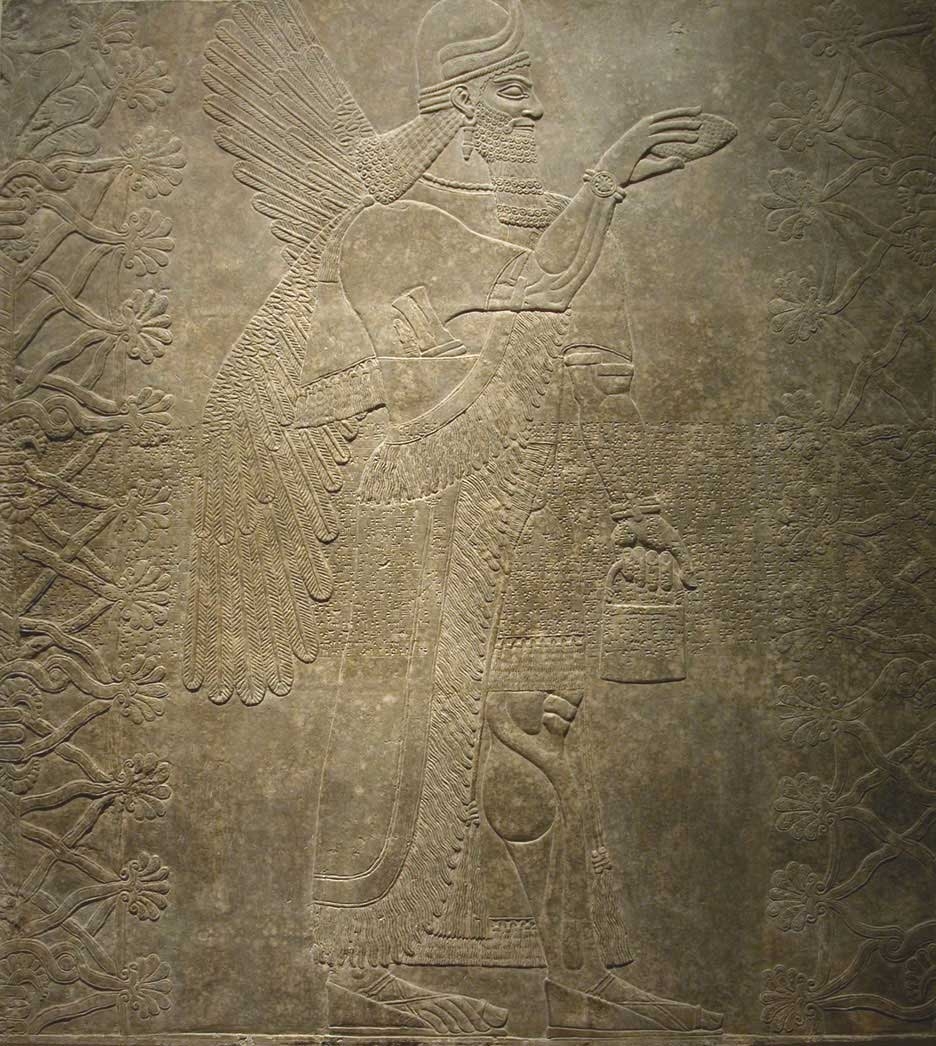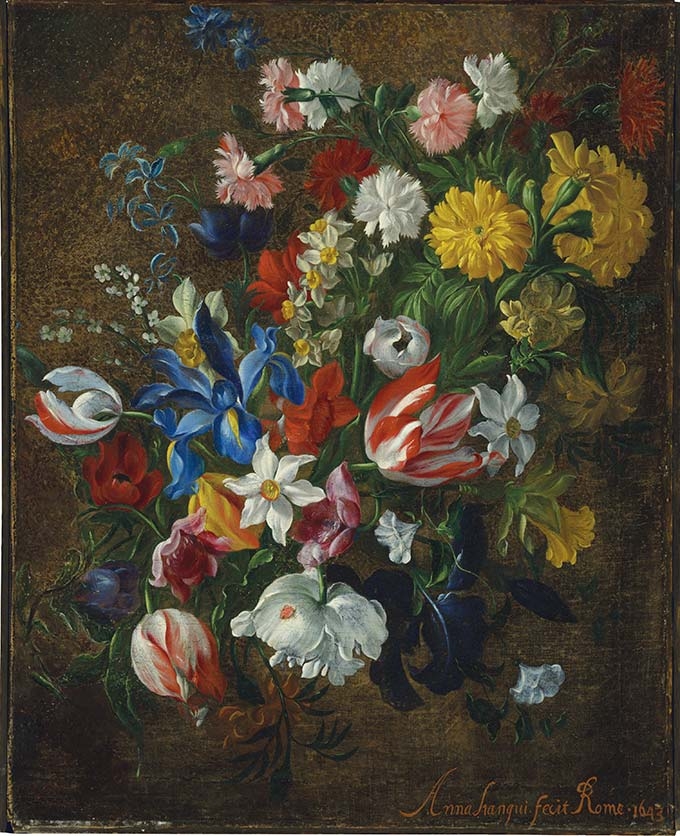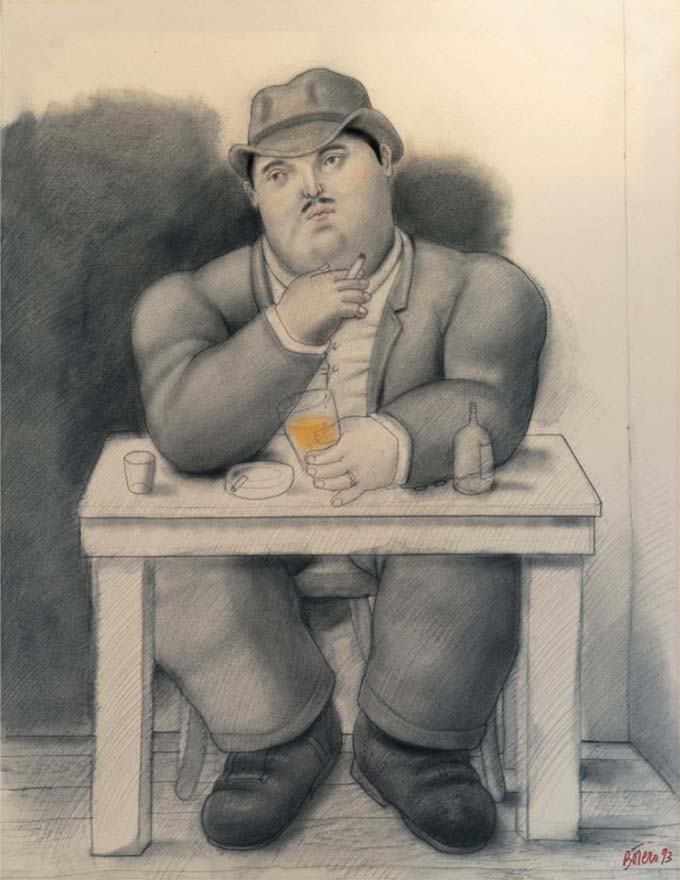Contemporary to Classical: Highlights from the New Collection Handbook
–
Over the past five decades the Middlebury College Museum of Art and its predecessor, the Christian A. Johnson Memorial Gallery (1968–1992), have assembled a collection of more than six thousand objects that range from antiquity to the present. Prior to 1970, art occasionally came to Middlebury, but with no consistent plan as to how it might support the academic program. The most significant acquisition was unequivocally the monumental alabaster relief from ancient Assyria that arrived in the second half of the nineteenth century as a gift from Wilson A. Farnsworth, class of 1848, and today welcomes visitors to the museum’s Boesky Family Lobby.

Winged Genie Pollinating the Date Palm, Assyrian, Nimrud (Kalhu), reign of Ashurnasirpal II (883–859 B.C.E.), alabaster, 94 x 90 inches. Gift of Dr. Wilson A. Farnsworth, Class of 1848. 0.114
This exhibit celebrates the publication of selected highlights from the museum’s permanent collection. Although Middlebury College was founded in 1800, active interest in creating a permanent art collection emerged only in 1968. That year, following the enormously generous gift of recent graduate Julie Johnson ’67 and her mother through the family’s Christian A. Johnson Endeavor Foundation, Middlebury was given a fund with which to begin a permanent art collection, along with a building in which to exhibit it.
While the guiding principles of collecting have not varied significantly over the decades, what is acquired has changed immeasurably, just as the academic program has evolved and the College has become ever more diverse. As time passes, future museum staff and College faculty will make different decisions about what objects should augment the permanent collection. This is exactly as it should be. What this handbook represents is what has been accomplished together thus far. It is gratifying to know that Middlebury will have this collection as a resource for future generations of students, faculty, and the larger community.

Anna Stanchi (Italian, active c. 1643), A Still Life with Tulips, Irises, Daffodils, Carnations, Hyacinths, and Other Flowers, All in a Glass Vase on a Stone Ledge with Ladiebug, 1643, oil on canvas, 22 3/8 x 18 ¼ inches. Collection of Middlebury College Museum of Art, purchase with funds provided by the Friends of Art Acquisition Fund and the Reva B. Seybolt ’72 Art Acquisition Fund, 2016.101.
The exhibit celebrates the rich diversity of the collection which ranges from the contemporary to the antique and represents cultures in Asia, Africa, South America, North America, and Europe. Works include a suit of ceremonial armor from Japan, a still-life by the seventeenth-century Italian artist Anna Stanchi, a 1993 drawing by the Colombian artist Fernando Botero (born 1932), and a silkscreen print created at Middlebury in 2013 by then visiting artist Derrick Adams (born 1970).

Fernando Botero (Colombian, born 1932), Man Smoking, 1993, graphite, charcoal, and watercolor on canvas, 51 1/4 × 39 1/2 inches. Collection of Middlebury College Museum of Art. Gift of Barbara P. and Robert P. ’64 Youngman, 2001.013. (Image: Copyright © Fernando Botero)
Both the handbook and this exhibit are the culmination of the dedication, expertise, and financial support of many people, particularly the co-editors, Richard Saunders, museum director; Pieter Broucke, Associate Dean for the Arts and Professor of History of Art and Architecture; and Sarah Briggs ’14.5, the museum’s former Sabarsky Fellow. In addition, the project was propelled by Meg Wallace, who managed it from start to finish, as well as present and former museum staff, who supported it along the way.
The greatest acknowledgment is owed to two groups. The editors would like to thank the seventy-six contributors—faculty, staff, students, alumni, and friends—who provided the interpretative texts that bring alive the objects selected for this publication, and, lastly, and perhaps most importantly, the members of the Middlebury Museum & Visual Arts Council, who embraced the concept of this publication from the start and provided the financial support to make it happen.
This exhibit was also made possible in part with support of the Christian A. Johnson Memorial Fund and the Kireker Family Museum of Art Exhibition Fund.
